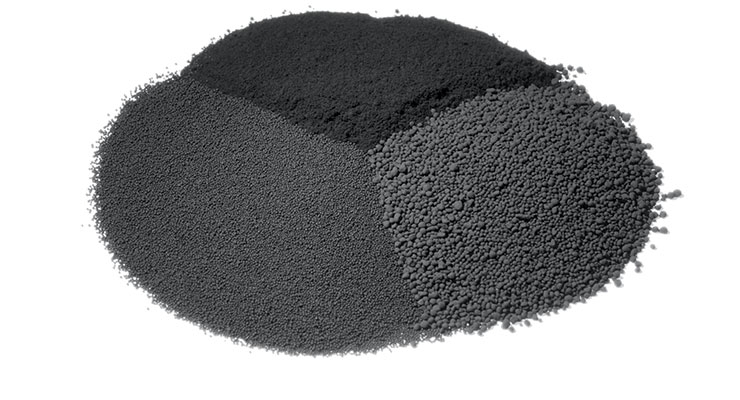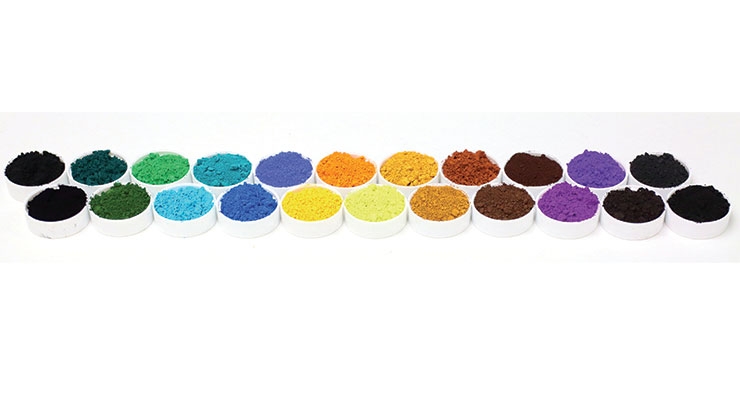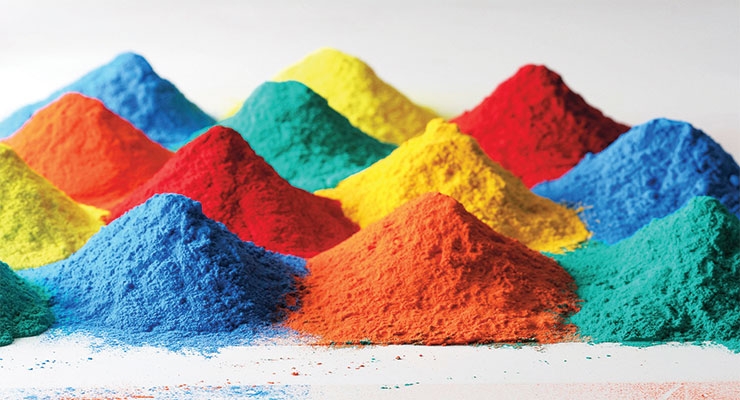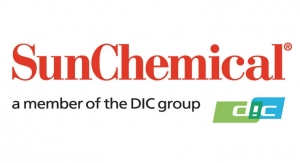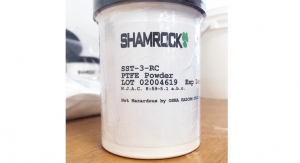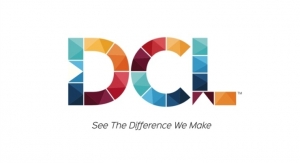David Savastano, Editor03.23.20
Whether it is organic pigments, inorganic pigments or dyes, supplied as dry powders, liquids, flushed colors or dispersions, colorants provide the eye-catching qualities we seek in packaging, publications, clothing and virtually every other product in the market.
Pigments are a growing field. Azo, phthalocyanine and high-performance pigments dominate the organic pigments side; inorganic pigments include titanium dioxide, carbon black, iron oxide and others.
According to Zion Market Research’s “Global Organic Pigments Market: By Type, Applications, Industry Size, Share, Trends and Forecast 2017-2024,” the worldwide organic pigment market was approximately $3.5 billion in 2017 and is expected to grow to $4.89 billion by 2024, with a CAGR of 4.8%.
“The rising demand for organic pigments from various industries, such as plastic, textile, etc., is anticipated to drive the global organic pigments market growth over the forecast timeline,” Zion Market Research’s analysts reported.
“By type, the organic pigments market includes high-performance pigments (HPP), phthalocyanine pigments, azo pigments and others,” Zion Market Research continued. “Azo pigments held a major revenue share in the year 2017, owing to its extensive use in printing inks for packaging of consumer goods and food and beverage. Moreover, easy access to different colors, such as orange, red and yellow, of azo pigments at economical prices is expected to further drive the segment growth over the estimated time period.”
By application, the organic pigments market includes paints and coatings, plastics, printing inks and others.
“Printing inks held a major revenue share in the year 2017, owing to the stringent government regulations against the use of metallic content pigments,” Zion Market Research concluded.
In its report, Organic Pigments Market by Type (Azo Pigments, Phthalocyanine Pigments, HPPs), Application (Printing Inks, Paints & Coatings, Plastics), and Region (North America, Europe, Asia Pacific, Middle East & Africa, and South America) - Global Forecast to 2023,” MarketsandMarkets placed the global organic pigments market at $3.55 billion in 2017, with the segment reaching $4.67 billion by 2023. MarketsandMarkets noted that high-performance pigments are expected to see the strongest growth.
Meanwhile, the inorganic pigment market is much larger. In its report, “Inorganic Pigments Market by Pigment Type (Titanium Dioxide, Iron Oxide, Carbon Black), Application (Paints & Coatings, Plastics, Inks), End-Use Industry (Building & Construction, Automotive, Packaging, Textiles), Region - Global Forecast to 2024,” MarketsandMarkets places the segment at $22 billion in sales in 2019, jumping to $28.3 billion by 2024.
“The major factors driving the inorganic pigments market include the growth of the global construction sector and the increasing significance of aesthetics in the packaging industry,” its analysts reported.
“On the basis of pigment type, the inorganic pigments market has been segmented into four types, namely, titanium dioxide, iron oxide, carbon black, and others. Titanium dioxide is projected to lead the global inorganic pigments market during the forecast period,” MarketsandMarkets added.
The Pigment Industry in 2019
The pigment industry faced a challenging year, with raw materials remaining a key concern. The biggest news, however, was the announcement that DIC Corporation, the parent company of Sun Chemical, agreed to acquire BASF Colors & Effects.
“We continue to invest in pigments as a core business and our parent company, DIC, has entered into an agreement to acquire BASF Colors & Effects to further expand our portfolio and further strengthen the supply chain for our customers,” said Chris Weighill, VP and GM – ink industry, Sun Chemical Performance Pigments. The acquisition is expected to close in the fourth quarter of 2020.
Weighill observed that 2019 was a dynamic, if not turbulent, year for the pigments market.
“There has been significant impact from raw materials, tariffs and plant incidents that have tragically impacted people’s lives that affected many parts of the industry,” Weighill noted. “Sun Chemical has worked diligently with our raw material suppliers and global customers to work through the recent challenges.
“Sun Chemical remains flexible and focused on innovation to maneuver through these trends, which we expect will continue into 2020. In the European Union, REACH regulations are also driving shifts in the market as customers requiring technical support move to global companies like Sun Chemical with the technical depth for product registrations.”
Pravin Chaudhari, CEO, pigments, Pidilite Industries Limited (India), observed that 2019 was an eventful and challenging year for high performance pigments.
“There were significant impacts from raw materials affecting the industry,” Chaudhari added. “Despite all of the disruptions, the HPP market continues to grow with more customers shifting from commodity pigments to HPPs. We expect this trend to continue in the near future. Pidilite is expanding its HPP capacity to be completed later this year to accommodate increasing demand.”
Chris Patterson, Clariant’s marketing manager segment printing & NIP for BU pigments, said that it is fair to say that 2019 was a challenging year.
“Overall, the industry saw a softening global economic environment and that constrained results across most colorant segments,” Patterson reported. “The impact of this softening was compounded by pronounced material shortages leading to reduced production volumes and industry deliveries.”
Arno Tuchbreiter, head of global industry management printing & specialties, BASF Colors + Effects, reported that the first half of 2019 was dulled by chemical accidents and manufacturing site closures in China impacting product groups such as indanthrones, azos, dyes and water-based preparations, with reduced benzisothiazolinone supply.
“The US’China trade war remains critical,” added Tuchbreiter. “Tariffs increased up to 25% in 2019 for many colorants either manufactured in China and exported to the US, or vice versa. The outbreak of the novel coronavirus at the end of 2019 hit everyone as a surprise and the full impact on the pigment business needs to be seen yet.”
Dr. Sanjay Monie, marketing manager, printing systems at Orion Engineered Carbons, reported that carbon black supply was tight in 2019.
“Demand was up, and companies were losing their sources of feedstock due to fewer exports and increased environmental regulations, for example in China,” said Dr. Monie. “This situation has changed as manufacturers adapted during the past year, and some of the demand in the important tire industry weakened with the softening in the automotive industry. This year got off to a strong start, and now we will have to see the impact of the coronavirus.”
“Some parts have fared better than others,” Chris Manning, sales and marketing manager, Shepherd Color Company, said. “Shepherd Color has been successful in managing its supply chains to maintain satisfactory deliveries. Unfortunately, this has not been without cost to the business. The imposition of tariffs and duties, especially into the US from China and into China from the US, has made some parts of the business particularly challenging. Not all costs were able to be passed along through the customer to the value chain.”
Sustainability and the Pigment Industry
Many pigment suppliers are continuously working on improving processes and manufacturing capabilities to reduce energy and water consumption.
Weighill noted that several facets encompass sustainability, including renewable raw materials, new environmentally-friendly technologies and responsible manufacturing, adding that Sun Chemical has issued its 10th annual Sustainability Report.
“It reports several key metrics demonstrating our commitment and progress in reducing energy consumption, CO2 emissions, water usage and solid waste generation,” Weighill said. “We have made progress in almost every area to reduce levels below those of 2012 while still growing our business. Sun Chemical’s occupational accidents, another very important metric, has also gone down over the same time period.”
“As a company that has been in business for over 140 years sustainability has been an important topic for us for a long time,” Thomas Schaller, president, Schlenk Metallic Pigments USA, said. “We continue to live and improve sustainability within our organization all the time. We also work closely with our customers to find and develop more sustainable products and processes.”
“We are witnessing increased awareness and tightening of environmental regulations by government bodies,” Chaudhari said. “Pidilite has invested significant money in making operations sustainable and compliant. Our risk assessment framework ensures continuous improvements and operational excellence. We see global customers increasingly using discretion in supplier selection, giving top priority to reliability and sustainable operations.”
Patterson said that Clariant has been engaged in ensuring that it conducts business in a sustainable manner.
“Our ongoing achievements can be viewed in our annual sustainability report,” Patterson reported. “Clariant also has its own, internal sustainability certification, Ecotain, which utilizes a holistic approach looking at all dimensions of the business process, for example, formulation, sourcing, production, packing and transportation to ascertain a product’s sustainability rating.”
“At Shepherd Color, sustainability is a natural process of continued optimization that started decades ago,” said Manning. “It is an extension of good business practices that range from good quality sourcing strategies with reputable suppliers to designing, optimizing and delivering current and future products to the customer that have less impact on the environment and the people using these products.”
Orion Engineered Carbons CEO Corning Painter noted that there is increased interest from customers, investors and employees.
“Last year we issued our first sustainability report,” Painter said. “Rather than happy talk, we committed ourselves to a range of reduction targets. In 2019 we also improved our emissions controls in China and linked our plant in Qingdao to the local heating system, displacing 20,000 tons of coal. This year we will bring on enhanced emission controls at a plant in the US and one in Korea. I think all the majors are committed to this.”
“We are also investigating new technologies to develop carbon blacks produced from renewable non-fossil-fuel sources for inks and other markets,” added Dr. Monie.
Tuchbreiter of BASF said that an increasingly critical attitude against packaging materials concerning waste management and environmental pollution leads to more regulations (with EU acting as lead region) that come with bans for selected single-use plastics and which push for fast improvements of waste collection rates and subsequent recycling. Additionally, voluntary measures, like “recyclable by design” guidelines, are set by brand owners who intend to increase the use of recycled materials in their packaging articles. The replacement of carbon black to better enable sorting and recycling of black colored waste is gaining momentum, especially for the packaging industry.
“The near-infrared (NIR) light management technologies that enable black plastics to be detected by plastics waste management facilities also enable smart processing techniques like laser welding and are used for solar heat management,”
he added.
“At the same time, consumer safety remains of paramount importance, especially for food contact and cosmetics packaging or toys,” Tuchbreiter continued. “Prioritizing consumer safety and requirements concerning low odor and low volatile organic compounds become of increasing relevance for automotive interior, textile and printing applications.”
Major Challenges for the Pigment Industry
The pigment industry continues to face numerous concerns. For example, Schaller reported that uncertainties in global trade relationships together with supply and cost pressure lead to a challenging overall situation.
Weighill said that price volatility of pigments and intermediates have been and continue to be a major challenge for the industry.
“Prices of raw materials continue to fluctuate quarterly/monthly in many markets. Many raw materials are sourced from China and have been subjected to supply shortages and escalating feedstocks,” said Weighill. “Managing supply and formulating agility have been critical to meet customer requirements and ensure an uninterrupted supply of product. Our supply chain team has established contingencies such as safety stock management, inventory positioning and sourcing more volume from a broader global supply base.”
Weighill said that the ink industry, like other chemical-related industries, has been greatly influenced by changing consumer trends, environmental regulations, political factors and new technologies.
“These changes have presented both challenges and opportunities for future innovation,” Weighill continued. “For existing products, we work closely with our customers to obtain additional registrations where necessary. We are also working closely with our intermediate manufacturers to ensure our pigment supply chain suffers minimal disruption.”
Frank Lavieri, EVP sales and marketing for DCL Corporation, previously DCC Lansco, said that 2019 was a hard year for the pigment industry due to supply disruptions caused by industrial accidents in Asia, tariffs between the US and China and escalating raw material costs, adding that DCL sees opportunities for North America.
“For DCL, stronger sales in North America more than compensated for sales to weaker economies,” Lavieri noted.
“DCL is starting up new organic pigment capacity in Canada that we will supply to our worldwide customer base, but particularly to US customers who want zero duty alternatives and shorter supply chains for better reliability,” Lavieri reported. “Our new capacity utilizes state-of-the-art technology to manufacture pigments with lower environmental impact and tight batch-to-batch variability. Commissioning trials are underway now and will be followed by full production.”
“Material cost increases due capacity shortages caused by environmental issues and shutdowns in China remained concern throughout last year,” Chaudhari said.
Patterson said that 2019 was certainly challenging in terms of raw material availability for a broad range of chemical intermediates, principally emanating from China.
“The resulting supply/demand imbalances caused significant price increases for a number of key color indices e.g. PY 74 and PY 65, associated with naphthol derivatives,” Patterson continued.
“Given the events of 2019, the most important item for Clariant, and also for our customers, remains supply chain security,” Patterson stated.
“The biggest challenges are maintaining the supply chains in terms of obtaining the quality and consistency of raw materials at the desired price and doing so in an ever-demanding world of tightening and changing regulations,” said Manning. “Regarding the manufacturing landscape, the pigment industry has been facing significant challenges with multiple shortages and costs inflation triggered by EH&S related mandatory plant closures in China,” Tuchbreiter said. “In general, global political developments, like the trade conflict between the US and China and Brexit, add uncertainty to the global trade with pigments.”
Jeff Okaichi, director VP of Toyocolor Co., Ltd., a subsidiary company of Toyo Ink Group, noted that manufacturers who produce pigments in China or who source ingredients from China continue to be affected by factory closures due to stricter pollution
regulations enforced by the Chinese government.
“Although supply shortages and excessive price hikes have settled down since mid 2019, the supply of some raw materials and pigments still remain very tight,” added Okaichi.
Jeffrey Shaw, chief supply chain officer, Sun Chemical, discussed transportation issues facing the industry.
There are several dynamics impacting transportation costs and driver shortages,” said Shaw. “Changing driver demographics, legislation, difficult work, time away from home, and lower wages all contribute greatly to cost increases and driver shortages. As drivers near retirement age, it is difficult to find replacement drivers or back-fill open positions. Then, when trucks are moving on the road, legislation has decreased the hours of service generating negative productivity, thereby continuing to impact cost since there are less available drivable hours. Even with these challenges, we continue to work closely with our carriers to ensure we are a ‘shipper of choice.’”
Orion’s Painter noted that environmental mandates have tightened in several markets.
“All the major carbon black manufacturers in the US are currently upgrading their emission controls as we committed to,” Painter added. “Orion is committing significant capital to this. Beyond capital allocation, we will naturally see higher operating costs, but it is the right thing to do.”
“The biggest concerns are feedstock availability, and the high-quality, high-density feedstocks that are required to produce ink grade carbon black,” Dr. Monie concluded.
Pigments are a growing field. Azo, phthalocyanine and high-performance pigments dominate the organic pigments side; inorganic pigments include titanium dioxide, carbon black, iron oxide and others.
According to Zion Market Research’s “Global Organic Pigments Market: By Type, Applications, Industry Size, Share, Trends and Forecast 2017-2024,” the worldwide organic pigment market was approximately $3.5 billion in 2017 and is expected to grow to $4.89 billion by 2024, with a CAGR of 4.8%.
“The rising demand for organic pigments from various industries, such as plastic, textile, etc., is anticipated to drive the global organic pigments market growth over the forecast timeline,” Zion Market Research’s analysts reported.
“By type, the organic pigments market includes high-performance pigments (HPP), phthalocyanine pigments, azo pigments and others,” Zion Market Research continued. “Azo pigments held a major revenue share in the year 2017, owing to its extensive use in printing inks for packaging of consumer goods and food and beverage. Moreover, easy access to different colors, such as orange, red and yellow, of azo pigments at economical prices is expected to further drive the segment growth over the estimated time period.”
By application, the organic pigments market includes paints and coatings, plastics, printing inks and others.
“Printing inks held a major revenue share in the year 2017, owing to the stringent government regulations against the use of metallic content pigments,” Zion Market Research concluded.
In its report, Organic Pigments Market by Type (Azo Pigments, Phthalocyanine Pigments, HPPs), Application (Printing Inks, Paints & Coatings, Plastics), and Region (North America, Europe, Asia Pacific, Middle East & Africa, and South America) - Global Forecast to 2023,” MarketsandMarkets placed the global organic pigments market at $3.55 billion in 2017, with the segment reaching $4.67 billion by 2023. MarketsandMarkets noted that high-performance pigments are expected to see the strongest growth.
Meanwhile, the inorganic pigment market is much larger. In its report, “Inorganic Pigments Market by Pigment Type (Titanium Dioxide, Iron Oxide, Carbon Black), Application (Paints & Coatings, Plastics, Inks), End-Use Industry (Building & Construction, Automotive, Packaging, Textiles), Region - Global Forecast to 2024,” MarketsandMarkets places the segment at $22 billion in sales in 2019, jumping to $28.3 billion by 2024.
“The major factors driving the inorganic pigments market include the growth of the global construction sector and the increasing significance of aesthetics in the packaging industry,” its analysts reported.
“On the basis of pigment type, the inorganic pigments market has been segmented into four types, namely, titanium dioxide, iron oxide, carbon black, and others. Titanium dioxide is projected to lead the global inorganic pigments market during the forecast period,” MarketsandMarkets added.
The Pigment Industry in 2019
The pigment industry faced a challenging year, with raw materials remaining a key concern. The biggest news, however, was the announcement that DIC Corporation, the parent company of Sun Chemical, agreed to acquire BASF Colors & Effects.
“We continue to invest in pigments as a core business and our parent company, DIC, has entered into an agreement to acquire BASF Colors & Effects to further expand our portfolio and further strengthen the supply chain for our customers,” said Chris Weighill, VP and GM – ink industry, Sun Chemical Performance Pigments. The acquisition is expected to close in the fourth quarter of 2020.
Weighill observed that 2019 was a dynamic, if not turbulent, year for the pigments market.
“There has been significant impact from raw materials, tariffs and plant incidents that have tragically impacted people’s lives that affected many parts of the industry,” Weighill noted. “Sun Chemical has worked diligently with our raw material suppliers and global customers to work through the recent challenges.
“Sun Chemical remains flexible and focused on innovation to maneuver through these trends, which we expect will continue into 2020. In the European Union, REACH regulations are also driving shifts in the market as customers requiring technical support move to global companies like Sun Chemical with the technical depth for product registrations.”
Pravin Chaudhari, CEO, pigments, Pidilite Industries Limited (India), observed that 2019 was an eventful and challenging year for high performance pigments.
“There were significant impacts from raw materials affecting the industry,” Chaudhari added. “Despite all of the disruptions, the HPP market continues to grow with more customers shifting from commodity pigments to HPPs. We expect this trend to continue in the near future. Pidilite is expanding its HPP capacity to be completed later this year to accommodate increasing demand.”
Chris Patterson, Clariant’s marketing manager segment printing & NIP for BU pigments, said that it is fair to say that 2019 was a challenging year.
“Overall, the industry saw a softening global economic environment and that constrained results across most colorant segments,” Patterson reported. “The impact of this softening was compounded by pronounced material shortages leading to reduced production volumes and industry deliveries.”
Arno Tuchbreiter, head of global industry management printing & specialties, BASF Colors + Effects, reported that the first half of 2019 was dulled by chemical accidents and manufacturing site closures in China impacting product groups such as indanthrones, azos, dyes and water-based preparations, with reduced benzisothiazolinone supply.
“The US’China trade war remains critical,” added Tuchbreiter. “Tariffs increased up to 25% in 2019 for many colorants either manufactured in China and exported to the US, or vice versa. The outbreak of the novel coronavirus at the end of 2019 hit everyone as a surprise and the full impact on the pigment business needs to be seen yet.”
Dr. Sanjay Monie, marketing manager, printing systems at Orion Engineered Carbons, reported that carbon black supply was tight in 2019.
“Demand was up, and companies were losing their sources of feedstock due to fewer exports and increased environmental regulations, for example in China,” said Dr. Monie. “This situation has changed as manufacturers adapted during the past year, and some of the demand in the important tire industry weakened with the softening in the automotive industry. This year got off to a strong start, and now we will have to see the impact of the coronavirus.”
“Some parts have fared better than others,” Chris Manning, sales and marketing manager, Shepherd Color Company, said. “Shepherd Color has been successful in managing its supply chains to maintain satisfactory deliveries. Unfortunately, this has not been without cost to the business. The imposition of tariffs and duties, especially into the US from China and into China from the US, has made some parts of the business particularly challenging. Not all costs were able to be passed along through the customer to the value chain.”
Sustainability and the Pigment Industry
Many pigment suppliers are continuously working on improving processes and manufacturing capabilities to reduce energy and water consumption.
Weighill noted that several facets encompass sustainability, including renewable raw materials, new environmentally-friendly technologies and responsible manufacturing, adding that Sun Chemical has issued its 10th annual Sustainability Report.
“It reports several key metrics demonstrating our commitment and progress in reducing energy consumption, CO2 emissions, water usage and solid waste generation,” Weighill said. “We have made progress in almost every area to reduce levels below those of 2012 while still growing our business. Sun Chemical’s occupational accidents, another very important metric, has also gone down over the same time period.”
“As a company that has been in business for over 140 years sustainability has been an important topic for us for a long time,” Thomas Schaller, president, Schlenk Metallic Pigments USA, said. “We continue to live and improve sustainability within our organization all the time. We also work closely with our customers to find and develop more sustainable products and processes.”
“We are witnessing increased awareness and tightening of environmental regulations by government bodies,” Chaudhari said. “Pidilite has invested significant money in making operations sustainable and compliant. Our risk assessment framework ensures continuous improvements and operational excellence. We see global customers increasingly using discretion in supplier selection, giving top priority to reliability and sustainable operations.”
Patterson said that Clariant has been engaged in ensuring that it conducts business in a sustainable manner.
“Our ongoing achievements can be viewed in our annual sustainability report,” Patterson reported. “Clariant also has its own, internal sustainability certification, Ecotain, which utilizes a holistic approach looking at all dimensions of the business process, for example, formulation, sourcing, production, packing and transportation to ascertain a product’s sustainability rating.”
“At Shepherd Color, sustainability is a natural process of continued optimization that started decades ago,” said Manning. “It is an extension of good business practices that range from good quality sourcing strategies with reputable suppliers to designing, optimizing and delivering current and future products to the customer that have less impact on the environment and the people using these products.”
Orion Engineered Carbons CEO Corning Painter noted that there is increased interest from customers, investors and employees.
“Last year we issued our first sustainability report,” Painter said. “Rather than happy talk, we committed ourselves to a range of reduction targets. In 2019 we also improved our emissions controls in China and linked our plant in Qingdao to the local heating system, displacing 20,000 tons of coal. This year we will bring on enhanced emission controls at a plant in the US and one in Korea. I think all the majors are committed to this.”
“We are also investigating new technologies to develop carbon blacks produced from renewable non-fossil-fuel sources for inks and other markets,” added Dr. Monie.
Tuchbreiter of BASF said that an increasingly critical attitude against packaging materials concerning waste management and environmental pollution leads to more regulations (with EU acting as lead region) that come with bans for selected single-use plastics and which push for fast improvements of waste collection rates and subsequent recycling. Additionally, voluntary measures, like “recyclable by design” guidelines, are set by brand owners who intend to increase the use of recycled materials in their packaging articles. The replacement of carbon black to better enable sorting and recycling of black colored waste is gaining momentum, especially for the packaging industry.
“The near-infrared (NIR) light management technologies that enable black plastics to be detected by plastics waste management facilities also enable smart processing techniques like laser welding and are used for solar heat management,”
he added.
“At the same time, consumer safety remains of paramount importance, especially for food contact and cosmetics packaging or toys,” Tuchbreiter continued. “Prioritizing consumer safety and requirements concerning low odor and low volatile organic compounds become of increasing relevance for automotive interior, textile and printing applications.”
Major Challenges for the Pigment Industry
The pigment industry continues to face numerous concerns. For example, Schaller reported that uncertainties in global trade relationships together with supply and cost pressure lead to a challenging overall situation.
Weighill said that price volatility of pigments and intermediates have been and continue to be a major challenge for the industry.
“Prices of raw materials continue to fluctuate quarterly/monthly in many markets. Many raw materials are sourced from China and have been subjected to supply shortages and escalating feedstocks,” said Weighill. “Managing supply and formulating agility have been critical to meet customer requirements and ensure an uninterrupted supply of product. Our supply chain team has established contingencies such as safety stock management, inventory positioning and sourcing more volume from a broader global supply base.”
Weighill said that the ink industry, like other chemical-related industries, has been greatly influenced by changing consumer trends, environmental regulations, political factors and new technologies.
“These changes have presented both challenges and opportunities for future innovation,” Weighill continued. “For existing products, we work closely with our customers to obtain additional registrations where necessary. We are also working closely with our intermediate manufacturers to ensure our pigment supply chain suffers minimal disruption.”
Frank Lavieri, EVP sales and marketing for DCL Corporation, previously DCC Lansco, said that 2019 was a hard year for the pigment industry due to supply disruptions caused by industrial accidents in Asia, tariffs between the US and China and escalating raw material costs, adding that DCL sees opportunities for North America.
“For DCL, stronger sales in North America more than compensated for sales to weaker economies,” Lavieri noted.
“DCL is starting up new organic pigment capacity in Canada that we will supply to our worldwide customer base, but particularly to US customers who want zero duty alternatives and shorter supply chains for better reliability,” Lavieri reported. “Our new capacity utilizes state-of-the-art technology to manufacture pigments with lower environmental impact and tight batch-to-batch variability. Commissioning trials are underway now and will be followed by full production.”
“Material cost increases due capacity shortages caused by environmental issues and shutdowns in China remained concern throughout last year,” Chaudhari said.
Patterson said that 2019 was certainly challenging in terms of raw material availability for a broad range of chemical intermediates, principally emanating from China.
“The resulting supply/demand imbalances caused significant price increases for a number of key color indices e.g. PY 74 and PY 65, associated with naphthol derivatives,” Patterson continued.
“Given the events of 2019, the most important item for Clariant, and also for our customers, remains supply chain security,” Patterson stated.
“The biggest challenges are maintaining the supply chains in terms of obtaining the quality and consistency of raw materials at the desired price and doing so in an ever-demanding world of tightening and changing regulations,” said Manning. “Regarding the manufacturing landscape, the pigment industry has been facing significant challenges with multiple shortages and costs inflation triggered by EH&S related mandatory plant closures in China,” Tuchbreiter said. “In general, global political developments, like the trade conflict between the US and China and Brexit, add uncertainty to the global trade with pigments.”
Jeff Okaichi, director VP of Toyocolor Co., Ltd., a subsidiary company of Toyo Ink Group, noted that manufacturers who produce pigments in China or who source ingredients from China continue to be affected by factory closures due to stricter pollution
regulations enforced by the Chinese government.
“Although supply shortages and excessive price hikes have settled down since mid 2019, the supply of some raw materials and pigments still remain very tight,” added Okaichi.
Jeffrey Shaw, chief supply chain officer, Sun Chemical, discussed transportation issues facing the industry.
There are several dynamics impacting transportation costs and driver shortages,” said Shaw. “Changing driver demographics, legislation, difficult work, time away from home, and lower wages all contribute greatly to cost increases and driver shortages. As drivers near retirement age, it is difficult to find replacement drivers or back-fill open positions. Then, when trucks are moving on the road, legislation has decreased the hours of service generating negative productivity, thereby continuing to impact cost since there are less available drivable hours. Even with these challenges, we continue to work closely with our carriers to ensure we are a ‘shipper of choice.’”
Orion’s Painter noted that environmental mandates have tightened in several markets.
“All the major carbon black manufacturers in the US are currently upgrading their emission controls as we committed to,” Painter added. “Orion is committing significant capital to this. Beyond capital allocation, we will naturally see higher operating costs, but it is the right thing to do.”
“The biggest concerns are feedstock availability, and the high-quality, high-density feedstocks that are required to produce ink grade carbon black,” Dr. Monie concluded.


